1N914 vs. 1N4148: What Difference is between 1N914 and 1N4148?
Standard Diode Rectifier Small Signal =< 200mA (Io), Any Speed 1V @ 10mA -65°C~175°C 5μA @ 75V Bulk DO-204AH, DO-35, Axial Through Hole
Unit Price: $0.026593
Ext Price: $0.03









Standard Diode Rectifier Small Signal =< 200mA (Io), Any Speed 1V @ 10mA -65°C~175°C 5μA @ 75V Bulk DO-204AH, DO-35, Axial Through Hole
1N914 and 1N4148 are small signal diodes that can handle the low voltage and low current. This post will show you the differences and similarities between them. There is a huge range of Semiconductors, Capacitors, Resistors and ICs in stock. Welcome RFQ.
1N914 vs. 1N4148 Pinout

1N914 vs. 1N4148 Pinout
What is a 1N914?
A diode is a semiconductor device that only enables current to flow in one direction. The current must always flow from the anode to the cathode. A grey bar, as illustrated in the image above, can be used to identify the cathode terminal.
The maximum current carrying capability of the IN914 Diode is 300mA, and it can endure peaks of up to 4A. Because of the diode's quick recovery time of 8ns at a forward current of 10mA, it is employed in applications where fast switching is required. This diode is quite similar to the 1N4148 Diode, except it can handle much higher reverse currents.
What is a 1N4148?
A diode is a semiconductor device that only enables current to flow in one direction. The current must always flow from the anode to the cathode. A grey bar, as illustrated in the image above, can be used to identify the cathode terminal.
The maximum current carrying capacity of the 1N4148 Diode is 300mA, and it can sustain peaks of up to 2A. Because of this diode's quick recovery time of 8ns at a forward current of 10mA, it is employed in applications where fast switching is required.
1N914 vs. 1N4148 Feature Comparison
1N914 Feature:
Fast switching Diode
Peak repetitive reverse voltage is 100V
RMS reverse voltage is 75V
Peak forward surge current is 4A
Forward continuous current If 300mA
Reverse recovery time 8ns
Available in DO-35 Package
1N4148 Feature:
Fast switching Diode
Peak repetitive reverse voltage is 100V
RMS reverse voltage is 75V
Peak forward surge current is 2A
Forward continuous current If 300mA
Reverse recovery time 8ns
Available in DO-35 Package
1N914 vs. 1N4148 Application
1N914 Application:
Can be used to prevent the reverse polarity problem
Half Wave and Full Wave rectifiers
Used as a protection device
Current flow regulators
1N4148 Application:
Can be used to prevent the reverse polarity problem
Protect Power electronic switches that are operating with high switching frequency.
Half Wave and Full Wave rectifiers
Used as a protection device
Current flow regulators
1N914 vs. 1N4148 Package

1N914 Package

1N4148 Package
1N914 vs. 1N4148 Datasheet PDF
Parts with Similar Specs
- ImagePart NumberManufacturerMountPackage / CaseForward VoltageAverage Rectified CurrentCurrent - Average Rectified (Io)Reverse Recovery TimeRecovery TimeMoisture Sensitivity Level (MSL)View Compare
1N914
Through Hole
DO-204AH, DO-35, Axial
1 V
200 mA
200mA
4 ns
4 ns
1 (Unlimited)
Through Hole
DO-204AH, DO-35, Axial
1 V
200 mA
-
4 ns
4 ns
1 (Unlimited)
Through Hole
DO-204AH, DO-35, Axial
1 V
200 mA
-
4 ns
4 ns
1 (Unlimited)
Through Hole
DO-204AH, DO-35, Axial
1 V
200 mA
-
4 ns
4 ns
1 (Unlimited)
Specifications
- TypeParameter
- Lifecycle Status
Lifecycle Status refers to the current stage of an electronic component in its product life cycle, indicating whether it is active, obsolete, or transitioning between these states. An active status means the component is in production and available for purchase. An obsolete status indicates that the component is no longer being manufactured or supported, and manufacturers typically provide a limited time frame for support. Understanding the lifecycle status is crucial for design engineers to ensure continuity and reliability in their projects.
ACTIVE (Last Updated: 15 hours ago) - Factory Lead Time18 Weeks
- Mount
In electronic components, the term "Mount" typically refers to the method or process of physically attaching or fixing a component onto a circuit board or other electronic device. This can involve soldering, adhesive bonding, or other techniques to secure the component in place. The mounting process is crucial for ensuring proper electrical connections and mechanical stability within the electronic system. Different components may have specific mounting requirements based on their size, shape, and function, and manufacturers provide guidelines for proper mounting procedures to ensure optimal performance and reliability of the electronic device.
Through Hole - Mounting Type
The "Mounting Type" in electronic components refers to the method used to attach or connect a component to a circuit board or other substrate, such as through-hole, surface-mount, or panel mount.
Through Hole - Package / Case
refers to the protective housing that encases an electronic component, providing mechanical support, electrical connections, and thermal management.
DO-204AH, DO-35, Axial - Number of Pins2
- Supplier Device Package
The parameter "Supplier Device Package" in electronic components refers to the physical packaging or housing of the component as provided by the supplier. It specifies the form factor, dimensions, and layout of the component, which are crucial for compatibility and integration into electronic circuits and systems. The supplier device package information typically includes details such as the package type (e.g., DIP, SOP, QFN), number of pins, pitch, and overall size, allowing engineers and designers to select the appropriate component for their specific application requirements. Understanding the supplier device package is essential for proper component selection, placement, and soldering during the manufacturing process to ensure optimal performance and reliability of the electronic system.
DO-35 - Weight80g
- Packaging
Semiconductor package is a carrier / shell used to contain and cover one or more semiconductor components or integrated circuits. The material of the shell can be metal, plastic, glass or ceramic.
Bulk - Published2016
- Part Status
Parts can have many statuses as they progress through the configuration, analysis, review, and approval stages.
Active - Moisture Sensitivity Level (MSL)
Moisture Sensitivity Level (MSL) is a standardized rating that indicates the susceptibility of electronic components, particularly semiconductors, to moisture-induced damage during storage and the soldering process, defining the allowable exposure time to ambient conditions before they require special handling or baking to prevent failures
1 (Unlimited) - Max Operating Temperature
The Maximum Operating Temperature is the maximum body temperature at which the thermistor is designed to operate for extended periods of time with acceptable stability of its electrical characteristics.
175°C - Min Operating Temperature
The "Min Operating Temperature" parameter in electronic components refers to the lowest temperature at which the component is designed to operate effectively and reliably. This parameter is crucial for ensuring the proper functioning and longevity of the component, as operating below this temperature may lead to performance issues or even damage. Manufacturers specify the minimum operating temperature to provide guidance to users on the environmental conditions in which the component can safely operate. It is important to adhere to this parameter to prevent malfunctions and ensure the overall reliability of the electronic system.
-65°C - Capacitance
Capacitance is a fundamental electrical property of electronic components that describes their ability to store electrical energy in the form of an electric field. It is measured in farads (F) and represents the ratio of the amount of electric charge stored on a component to the voltage across it. Capacitors are passive components that exhibit capacitance and are commonly used in electronic circuits for various purposes such as filtering, energy storage, timing, and coupling. Capacitance plays a crucial role in determining the behavior and performance of electronic systems by influencing factors like signal propagation, frequency response, and power consumption.
4pF - Voltage - Rated DC
Voltage - Rated DC is a parameter that specifies the maximum direct current (DC) voltage that an electronic component can safely handle without being damaged. This rating is crucial for ensuring the proper functioning and longevity of the component in a circuit. Exceeding the rated DC voltage can lead to overheating, breakdown, or even permanent damage to the component. It is important to carefully consider this parameter when designing or selecting components for a circuit to prevent any potential issues related to voltage overload.
100V - Max Power Dissipation
The maximum power that the MOSFET can dissipate continuously under the specified thermal conditions.
500mW - Current Rating
Current rating is the maximum current that a fuse will carry for an indefinite period without too much deterioration of the fuse element.
200mA - Base Part Number
The "Base Part Number" (BPN) in electronic components serves a similar purpose to the "Base Product Number." It refers to the primary identifier for a component that captures the essential characteristics shared by a group of similar components. The BPN provides a fundamental way to reference a family or series of components without specifying all the variations and specific details.
1N914 - Polarity
In electronic components, polarity refers to the orientation or direction in which the component must be connected in a circuit to function properly. Components such as diodes, capacitors, and LEDs have polarity markings to indicate which terminal should be connected to the positive or negative side of the circuit. Connecting a component with incorrect polarity can lead to malfunction or damage. It is important to pay attention to polarity markings and follow the manufacturer's instructions to ensure proper operation of electronic components.
Standard - Element Configuration
The distribution of electrons of an atom or molecule (or other physical structure) in atomic or molecular orbitals.
Single - Speed
In electronic components, "Speed" typically refers to the rate at which data can be processed or transferred within the component. It is a measure of how quickly the component can perform its functions, such as executing instructions or transmitting signals. Speed is often specified in terms of frequency, such as clock speed in processors or data transfer rate in memory modules. Higher speed components can perform tasks more quickly, leading to improved overall performance in electronic devices. It is an important parameter to consider when designing or selecting electronic components for specific applications.
Small Signal =< 200mA (Io), Any Speed - Diode Type
In electronic components, the parameter "Diode Type" refers to the specific type or configuration of a diode, which is a semiconductor device that allows current to flow in one direction only. There are various types of diodes, each designed for specific applications and functions. Common diode types include rectifier diodes, zener diodes, light-emitting diodes (LEDs), and Schottky diodes, among others. The diode type determines the diode's characteristics, such as forward voltage drop, reverse breakdown voltage, and maximum current rating, making it crucial for selecting the right diode for a particular circuit or application. Understanding the diode type is essential for ensuring proper functionality and performance in electronic circuits.
Standard - Current - Reverse Leakage @ Vr
Current - Reverse Leakage @ Vr is a parameter that describes the amount of current that flows in the reverse direction through a diode or other semiconductor component when a reverse voltage (Vr) is applied across it. This leakage current is typically very small, but it is important to consider in electronic circuits as it can affect the overall performance and reliability of the component. The reverse leakage current is influenced by factors such as the material properties of the semiconductor, temperature, and the magnitude of the reverse voltage applied. Manufacturers provide this parameter in datasheets to help engineers and designers understand the behavior of the component in reverse bias conditions.
5μA @ 75V - Power Dissipation
the process by which an electronic or electrical device produces heat (energy loss or waste) as an undesirable derivative of its primary action.
500mW - Output Current
The rated output current is the maximum load current that a power supply can provide at a specified ambient temperature. A power supply can never provide more current that it's rated output current unless there is a fault, such as short circuit at the load.
200mA - Voltage - Forward (Vf) (Max) @ If
The parameter "Voltage - Forward (Vf) (Max) @ If" refers to the maximum voltage drop across a diode when it is forward-biased and conducting a specified forward current (If). It indicates the maximum potential difference the diode can withstand while allowing current to flow in the forward direction without breaking down. This value is crucial for designing circuits as it helps determine how much voltage will be lost across the diode during operation. Higher Vf values can lead to reduced efficiency in power applications, making this parameter essential for optimizing circuit performance.
1V @ 10mA - Forward Current
Current which flows upon application of forward voltage.
10mA - Operating Temperature - Junction
Operating Temperature - Junction refers to the maximum temperature at which the junction of an electronic component can safely operate without causing damage or performance degradation. This parameter is crucial for determining the reliability and longevity of the component, as excessive heat can lead to thermal stress and failure. Manufacturers specify the operating temperature range to ensure that the component functions within safe limits under normal operating conditions. It is important for designers and engineers to consider the operating temperature - junction when selecting and using electronic components to prevent overheating and ensure optimal performance.
-65°C~175°C - Max Surge Current
Surge current is a peak non repetitive current. Maximum (peak or surge) forward current = IFSM or if(surge), the maximum peak amount of current the diode is able to conduct in forward bias mode.
4A - Voltage - DC Reverse (Vr) (Max)
Voltage - DC Reverse (Vr) (Max) is a parameter in electronic components that specifies the maximum reverse voltage that the component can withstand without breaking down. This parameter is crucial for components like diodes and transistors that are often subjected to reverse voltage during operation. Exceeding the maximum reverse voltage can lead to the component failing or getting damaged. Designers need to consider this parameter when selecting components to ensure the reliability and longevity of their circuits.
100V - Current - Average Rectified (Io)
The parameter "Current - Average Rectified (Io)" in electronic components refers to the average value of the rectified current flowing through the component. This parameter is important in determining the average power dissipation and thermal considerations of the component. It is typically specified in datasheets for diodes, rectifiers, and other components that handle alternating current (AC) and convert it to direct current (DC). Understanding the average rectified current helps in selecting the appropriate component for a given application to ensure reliable operation and prevent overheating.
200mA - Forward Voltage
the amount of voltage needed to get current to flow across a diode.
1V - Max Reverse Voltage (DC)
Max Reverse Voltage (DC) refers to the maximum voltage that a semiconductor device, such as a diode, can withstand in the reverse bias direction without failing. Exceeding this voltage can lead to breakdown and potential damage to the component. It is a critical parameter in circuit design to ensure reliability and prevent failure when the device is subjected to reverse voltage conditions.
100V - Average Rectified Current
Mainly used to characterize alternating voltage and current. It can be computed by averaging the absolute value of a waveform over one full period of the waveform.
200mA - Reverse Recovery Time
Reverse Recovery Time is a key parameter in semiconductor devices, particularly diodes and transistors. It refers to the time taken for a diode or transistor to switch from conducting in the forward direction to blocking in the reverse direction when the polarity of the voltage across the device is reversed. This parameter is crucial in applications where fast switching speeds are required, as a shorter reverse recovery time allows for quicker response times and improved efficiency. Reverse Recovery Time is typically specified in datasheets for electronic components and is an important consideration in circuit design to ensure optimal performance and reliability.
4 ns - Peak Reverse Current
The maximum voltage that a diode can withstand in the reverse direction without breaking down or avalanching.If this voltage is exceeded the diode may be destroyed. Diodes must have a peak inverse voltage rating that is higher than the maximum voltage that will be applied to them in a given application.
5μA - Max Repetitive Reverse Voltage (Vrrm)
The Max Repetitive Reverse Voltage (Vrrm) is a crucial parameter in electronic components, particularly in diodes and transistors. It refers to the maximum voltage that can be applied across the component in the reverse direction without causing damage. This parameter is important for ensuring the proper functioning and longevity of the component in circuits where reverse voltage may be present. Exceeding the Vrrm rating can lead to breakdown and failure of the component, so it is essential to carefully consider this specification when designing or selecting components for a circuit.
100V - Capacitance @ Vr, F
Capacitance @ Vr, F refers to the capacitance value of a capacitor measured at a specified rated voltage (Vr). It indicates how much electrical charge the capacitor can store per volt when subjected to this voltage. This parameter is essential for understanding the behavior of capacitors in circuits, particularly under different voltage conditions, and ensures that the component operates within its safe limits. The unit of measurement is Farads (F), which quantifies the capacitor's ability to hold an electrical charge.
4pF @ 0V 1MHz - Peak Non-Repetitive Surge Current
Peak Non-Repetitive Surge Current is a specification in electronic components that refers to the maximum current that the component can withstand for a short duration without sustaining damage. This surge current typically occurs as a result of sudden voltage spikes or transient events in the circuit. It is important to consider this parameter when designing or selecting components to ensure they can handle occasional high-current surges without failing. The value of Peak Non-Repetitive Surge Current is usually specified in amperes and is crucial for protecting the component and maintaining the overall reliability of the circuit.
4A - Reverse Voltage
the voltage drop across the diode if the voltage at the cathode is more positive than the voltage at the anode
75V - Max Forward Surge Current (Ifsm)
Max Forward Surge Current (Ifsm) is a parameter used to specify the maximum peak current that a diode or other electronic component can withstand for a short duration during a surge event. Surge currents can occur due to sudden changes in voltage or power supply fluctuations, and the Ifsm rating helps determine the component's ability to handle such transient overloads without being damaged. It is important to consider the Ifsm rating when selecting components for applications where surge currents are expected, such as in power supplies, motor drives, and other high-power circuits. Exceeding the Ifsm rating can lead to overheating, degradation, or failure of the component, so it is crucial to ensure that the chosen component can safely handle the expected surge currents in the circuit.
1A - Recovery Time
Recovery time in electronic components refers to the time it takes for a device to return to its normal operating state after being subjected to a specific stimulus or disturbance. This parameter is particularly important in devices such as diodes, transistors, and capacitors, where the recovery time can impact the overall performance and reliability of the component. A shorter recovery time indicates that the component can quickly recover from a transient event, ensuring proper functionality and minimizing any potential disruptions in the circuit. Manufacturers typically provide recovery time specifications to help engineers and designers select components that meet the requirements of their specific applications.
4 ns - Max Junction Temperature (Tj)
Max Junction Temperature (Tj) refers to the maximum allowable temperature at the junction of a semiconductor device, such as a transistor or integrated circuit. It is a critical parameter that influences the performance, reliability, and lifespan of the component. Exceeding this temperature can lead to thermal runaway, breakdown, or permanent damage to the device. Proper thermal management is essential to ensure the junction temperature remains within safe operating limits during device operation.
175°C - Height1.91mm
- Length4.56mm
- Width1.91mm
- REACH SVHC
The parameter "REACH SVHC" in electronic components refers to the compliance with the Registration, Evaluation, Authorization, and Restriction of Chemicals (REACH) regulation regarding Substances of Very High Concern (SVHC). SVHCs are substances that may have serious effects on human health or the environment, and their use is regulated under REACH to ensure their safe handling and minimize their impact.Manufacturers of electronic components need to declare if their products contain any SVHCs above a certain threshold concentration and provide information on the safe use of these substances. This information allows customers to make informed decisions about the potential risks associated with using the components and take appropriate measures to mitigate any hazards.Ensuring compliance with REACH SVHC requirements is essential for electronics manufacturers to meet regulatory standards, protect human health and the environment, and maintain transparency in their supply chain. It also demonstrates a commitment to sustainability and responsible manufacturing practices in the electronics industry.
No SVHC - Radiation Hardening
Radiation hardening is the process of making electronic components and circuits resistant to damage or malfunction caused by high levels of ionizing radiation, especially for environments in outer space (especially beyond the low Earth orbit), around nuclear reactors and particle accelerators, or during nuclear accidents or nuclear warfare.
No - RoHS Status
RoHS means “Restriction of Certain Hazardous Substances” in the “Hazardous Substances Directive” in electrical and electronic equipment.
ROHS3 Compliant - Lead Free
Lead Free is a term used to describe electronic components that do not contain lead as part of their composition. Lead is a toxic material that can have harmful effects on human health and the environment, so the electronics industry has been moving towards lead-free components to reduce these risks. Lead-free components are typically made using alternative materials such as silver, copper, and tin. Manufacturers must comply with regulations such as the Restriction of Hazardous Substances (RoHS) directive to ensure that their products are lead-free and environmentally friendly.
Lead Free
Manufacturer
On Semiconductor (Nasdaq: ON) is a manufacturer engaging itself in reducing energy use. It features a comprehensive portfolio of power, signal management, and logic, custom solutions that are energy efficient. It acts as a world-class supply chain with high reliability and a network of manufacturing facilities, sales, offices, and design centres in key markets through North America, Europe, and the Asia Pacific regions.
Is 1N914 the same as 1N4148?
1N914 diode is quite similar to the 1N4148 Diode, except it can handle much higher reverse currents.
What is the forward voltage drop of a silicon diode?
about 0.7v As the forward voltage drop across a silicon diode is almost constant at about 0.7v, while the current through it varies by relatively large amounts, a forward-biased signal diode can make a simple voltage regulating circuit.
Are 1N914 and 1N4148 zener diode?
They are standard silicon switching signal diodes.
What is 1N4148 diode used for?
1N4148 diode is a high-speed switching diode with small size and fast switching. Its applications mainly include single supply isolation for high-frequency signal circuits, industrial control circuits, computer boards, communication, TV, etc.
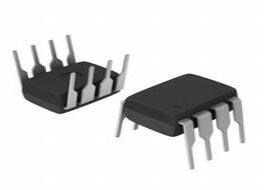 DS1307 RTC: Pinout, Equivalent, Datasheet
DS1307 RTC: Pinout, Equivalent, Datasheet17 August 20213289
 MUR460 Diode: Features, Pinout, and Datasheet
MUR460 Diode: Features, Pinout, and Datasheet26 October 20218294
 FR107 Rectifier Diode: Datasheet, Features and Equivalent
FR107 Rectifier Diode: Datasheet, Features and Equivalent24 September 202119995
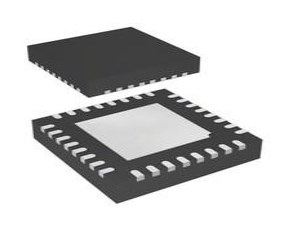 STM32F302K8U7 Microcontroller: 72MHz, 64 KB Flash and 32-Pin UFQFPN
STM32F302K8U7 Microcontroller: 72MHz, 64 KB Flash and 32-Pin UFQFPN12 January 2022505
 PMEG3050EP Schottky Barrier Rectifier: 30V, 5A, Datasheet PDF
PMEG3050EP Schottky Barrier Rectifier: 30V, 5A, Datasheet PDF22 February 2022925
 An Overview of STM32L082xx Ultra-Low-Power 32-bit MCU
An Overview of STM32L082xx Ultra-Low-Power 32-bit MCU29 February 2024187
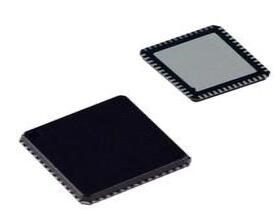 AD9959 Frequency Synthesizer: Pinout, Datasheet, Application Circuit
AD9959 Frequency Synthesizer: Pinout, Datasheet, Application Circuit28 September 20211175
 STM32F429ZIT6 for Industrial Automation: Complete Guide 2025
STM32F429ZIT6 for Industrial Automation: Complete Guide 202524 July 2025132
 13 kinds of sensors in mobile phones and what are recorded by the sensors
13 kinds of sensors in mobile phones and what are recorded by the sensors26 November 2025106354
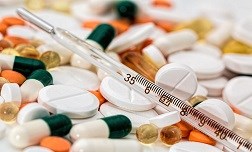 Methods for measuring the temperature of semiconductor devices
Methods for measuring the temperature of semiconductor devices14 November 20222038
 What is FIR Filter?
What is FIR Filter?24 September 202015623
 TinyML Takes a Major Step Forward as Israeli Company Releases New Chip
TinyML Takes a Major Step Forward as Israeli Company Releases New Chip19 April 2022949
 Introduction to Graphics Processing Unit (GPU)
Introduction to Graphics Processing Unit (GPU)26 January 20212994
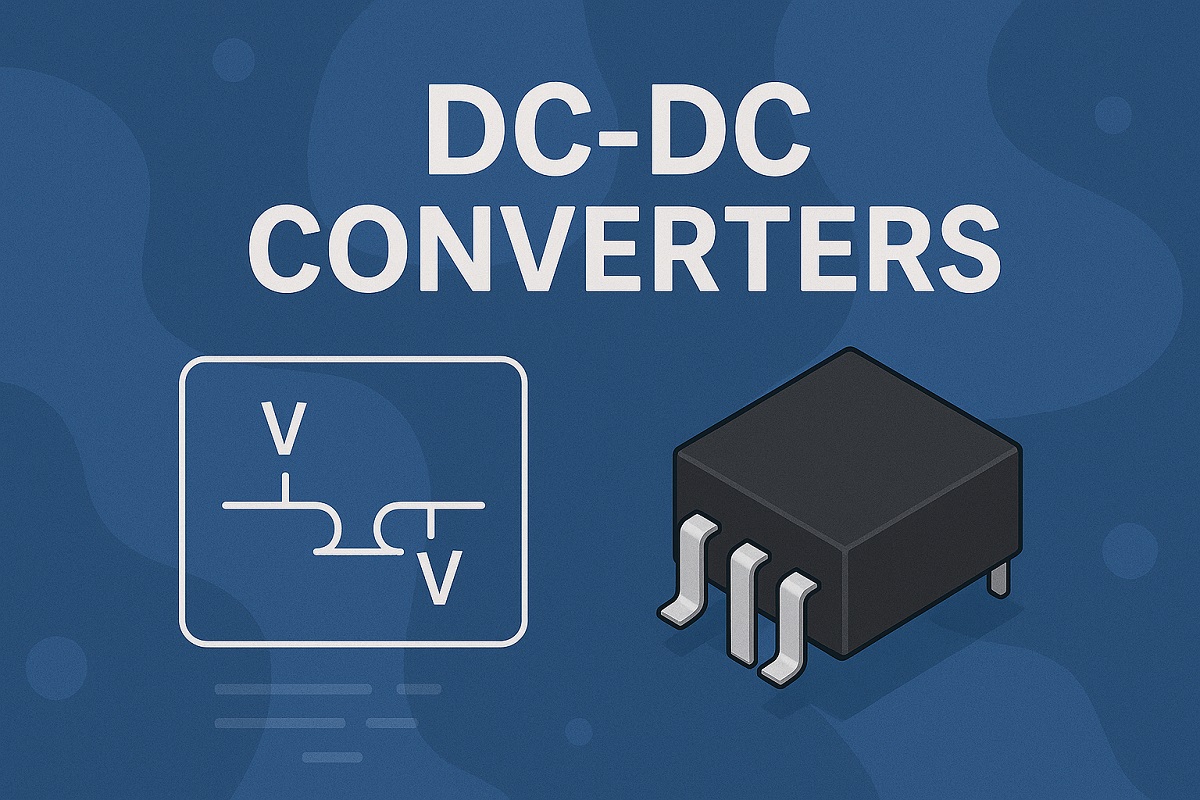 The Complete Guide to DC-DC Converters
The Complete Guide to DC-DC Converters24 May 2025953
 Using ESP32 to Make an IoT Weather Station
Using ESP32 to Make an IoT Weather Station24 February 20235985
 What is a 555 Timer?
What is a 555 Timer?09 April 202510831
ON Semiconductor
In Stock: 5000
Minimum: 1 Multiples: 1
Qty
Unit Price
Ext Price
1
$0.026593
$0.03
500
$0.019554
$9.78
1000
$0.016295
$16.30
2000
$0.014949
$29.90
5000
$0.013971
$69.86
10000
$0.012997
$129.97
15000
$0.012569
$188.54
50000
$0.012359
$617.95
Not the price you want? Send RFQ Now and we'll contact you ASAP.
Inquire for More Quantity




